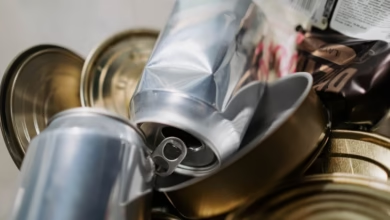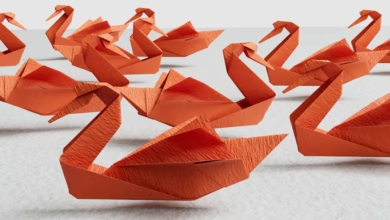Metals in Motion: Exploring the Interplay of Industry, Investment, and Global Trends

In an increasingly interconnected global economy, the dynamics of metal markets play a pivotal role in shaping both industrial practices and investment strategies. From the timeless allure of silver, which seamlessly straddles the line between a precious asset and an industrial staple, to the fluctuating prices of copper that offer insights into economic health, the world of metals is multifaceted and ever-evolving. As sustainability takes center stage, the surge in demand for rare earth metals driven by green energy technologies underscores the urgent need for a shift in how we view and utilize these resources. Additionally, the ongoing debates surrounding platinum and palladium investments highlight the nuances of precious metals in an uncertain economic landscape. In this article, we will explore these critical themes, examining how inflation, mining regulations, and the future of aluminum influence not only market prices but also the strategies investors employ to diversify their portfolios. Join us as we delve into the complex interplay between industrial needs and investment opportunities in the metal markets.
- 1. **Navigating the Metal Markets: Silver's Dual Role in Industry and Investment**
- 2. **Economic Indicators: How Copper Prices Mirror Global Trends**
- 3. **The Green Revolution: Demand for Rare Earth Metals in Renewable Energy**
1. **Navigating the Metal Markets: Silver's Dual Role in Industry and Investment**
Silver plays a unique and multifaceted role in both industrial applications and investment strategies. Its properties make it an essential component in various industries, including electronics, solar energy, and medical applications. In electronics, silver's excellent conductivity is crucial for the manufacturing of components such as circuit boards and connectors. The rise of renewable energy technologies, particularly solar panels, has further driven demand, as silver is a key material in photovoltaic cells. Additionally, the metal's antibacterial properties enhance its use in medical equipment and hygiene products.
On the investment side, silver is often viewed as a safe-haven asset, similar to gold. Investors turn to silver during economic uncertainty, seeking to hedge against inflation and currency fluctuations. This dual nature as both an industrial metal and an investment vehicle creates a dynamic market influenced by various factors. For instance, increased industrial demand can drive prices higher, while economic downturns may prompt investors to acquire silver as a protective measure.
The interplay between these two roles means that silver prices can be volatile. Factors such as technological advancements, global economic conditions, and shifts in investment sentiment all contribute to price fluctuations. As industries evolve and new applications for silver emerge, its significance in the investment landscape continues to grow, making it an essential metal to watch for both industrial stakeholders and investors alike.
2. **Economic Indicators: How Copper Prices Mirror Global Trends**
Copper prices serve as a crucial economic indicator, reflecting broader global economic health due to the metal's extensive use across various industries. As a primary component in electrical wiring, plumbing, and construction, copper demand is closely tied to industrial activity. When economies are thriving, infrastructure projects and manufacturing activities tend to increase, driving up copper consumption and, consequently, its price.
Conversely, during economic downturns, reduced construction and manufacturing activities lead to lower demand for copper, resulting in declining prices. This correlation makes copper a valuable barometer for assessing economic conditions. For instance, significant price fluctuations often precede or coincide with changes in GDP growth rates, employment statistics, and consumer spending patterns.
Moreover, geopolitical factors and supply chain disruptions can also influence copper prices. Events such as trade disputes, natural disasters, or regulatory changes in major copper-producing countries can lead to supply shortages, causing prices to spike even amidst a slowdown in demand. Thus, monitoring copper prices can provide investors and policymakers with insights into both current economic trends and potential future shifts.
In summary, the dynamic nature of copper prices offers a clear reflection of global economic health, serving as a leading indicator for various economic activities and trends.
3. **The Green Revolution: Demand for Rare Earth Metals in Renewable Energy**
The transition to renewable energy sources is reshaping the demand for rare earth metals, which are critical components in a variety of green technologies. As nations strive to reduce carbon emissions and enhance energy efficiency, the need for these materials has surged significantly. Rare earth metals, such as neodymium and dysprosium, are essential for the production of high-strength magnets used in wind turbines and electric vehicle (EV) motors. These magnets are vital for improving energy conversion efficiency and overall performance, making them a cornerstone of the green energy revolution.
Furthermore, rare earth elements are crucial in the manufacturing of batteries, particularly lithium-ion batteries, which power electric vehicles and store energy generated from renewable sources. As the global push for EV adoption accelerates, the demand for these metals is expected to rise sharply. The growth of solar power technologies also relies on rare earth elements, which are used in photovoltaic cells and other components that enhance energy capture and conversion.
However, the increasing demand for rare earth metals presents challenges. The supply chain is often dominated by a few countries, primarily China, which controls a significant portion of global production. This concentration raises concerns about supply security and geopolitical risks. Additionally, the environmental impact of mining and processing these metals cannot be overlooked, as it can lead to significant ecological damage and pollution.
As the world moves toward a more sustainable future, the role of rare earth metals will be pivotal in facilitating this transition. Their application in renewable energy technologies not only supports the reduction of greenhouse gas emissions but also highlights the importance of developing sustainable mining practices and diversifying sources to ensure a stable supply for future generations.
In summary, the complex interplay of metals in both industrial applications and investment landscapes is underscored by the multifaceted roles they play in today’s economy. Silver's dual role as both a critical industrial component and a sought-after investment asset highlights its unique position in market dynamics. Similarly, copper prices serve as a barometer for global economic health, reflecting the broader trends that influence both growth and recession. As we transition towards greener technologies, the burgeoning demand for rare earth metals is set to reshape market priorities, while the ongoing debate between platinum and palladium investments suggests a nuanced approach to precious metal allocation.
Moreover, the importance of diversifying investment portfolios with metals cannot be overstated, particularly in an environment where inflation continuously impacts price stability. The future of aluminum, bolstered by its potential in sustainable practices, points to a promising shift towards environmentally responsible sourcing. Lastly, mining regulations will play a crucial role in determining metal prices, affecting supply chains and market accessibility. As we look ahead, understanding these factors will be essential for investors and industries alike, navigating the evolving landscape of metal markets and their implications for economic resilience and sustainability.





